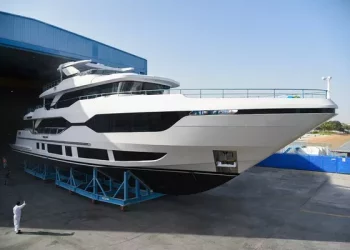At the beginning of 2018, the Ministry of Finance finally released the subsidy standards for new energy vehicles.
Under the latest standards, subsidies for new energy vehicles will generally be reduced. In addition, the new standards also have more detailed rules on battery performance and energy consumption levels, encouraging manufacturers to develop and produce more energy dense batteries, better electronic control technology and lighter body weight.
Now that the subsidy transition period has expired, Tram will provide you with a detailed review of the most complete and latest 2018 new energy vehicle subsidy standards in each region of the country in the first half of 2018.
The local subsidy standard is determined directly according to the national subsidy for the car models in the following regions.
Guangdong, Yunnan, Hainan, Shanxi, Guangzhou, Wenzhou, Zhoushan, Chengdu, Hangzhou, Xiamen, Harbin, Chongqing and Qinghai are directly subsidized according to 50% of the national subsidy standard, and Liuzhou City in Guangxi is subsidized according to 40% of the national subsidy standard;
Sichuan Guangyuan city is in accordance with the national subsidy standard 25% to give subsidies;
Changsha is in accordance with the national subsidy standard of 20% to give subsidies.
In the following areas, local subsidy standards are determined according to different types of vehicles.
Wuhan determines the subsidy standard according to the wheelbase, in which the wheelbase greater than 2.2 meters is 50% of the national subsidy standard, and the wheelbase less than or equal to 2.2 meters is 20 of the national subsidy;
Shanghai determines the subsidy standard according to the power type. For pure electric passenger cars, local subsidies are given according to 50% of the national subsidy, and for hybrid passenger cars, local subsidies are given according to 30% of the national subsidy.
Xi ‘an determines the local subsidy standard according to the main body of vehicle use. Vehicles used in public service areas will be given local subsidy at 50% of the national subsidy standard, while vehicles used in non-public areas will be given local subsidy at 30% of the national subsidy standard.
At present, only the following regions issued new energy vehicle subsidy policy in the clear new energy bus, new energy special vehicles, fuel cell vehicle subsidy standards.
The fuel cell vehicle in Shanghai is 100% of the national subsidy to the local subsidy;
Yunnan, Hainan, Hangzhou, Xiamen, Harbin, Qinghai new energy buses, new energy special vehicles and fuel cell vehicles are in accordance with the national subsidy standard 50% to give local subsidies;
Xi ‘an’s new energy buses, new energy special vehicles and fuel cell vehicles are also public service vehicles in accordance with 50% of the national subsidy to local subsidies, non-public service vehicles in accordance with the national subsidy standards of 30% to local subsidies;
Chongqing’s new energy bus in accordance with the national subsidy standard of 20% to give local subsidies, new energy special vehicle in accordance with the national subsidy of 30% to give local subsidies, fuel cell vehicle in accordance with the national subsidy of 40% to give local subsidies;
In Henan Province, new energy buses, new energy special vehicles and fuel cell vehicles longer than 8 meters are given local subsidies in accordance with 30% of the national subsidies.












































